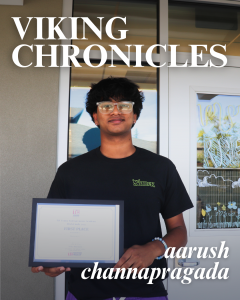Can you really be real on BeReal?
Staffer Maple Leung poses to take a BeReal, to demonstrate the inherent performativity of the app.
October 10, 2022
No filters, no time to cover a zit and definitely not enough time to put on a trendy outfit. BeReal, dubbed the “anti-Instagram” app, has sprung into popularity and aims to create an authentic user experience. While it seems genuine, BeReal, along with other social media apps, aren’t real at all. The increasing influx of staged photos and posed candids proves that the deception within social media is only growing.
From a psychological perspective, authenticity is defined as the outwards expression of your own identity and how it reflects your true self. Increasingly, social media users have become interested in attempting to display the most authentic versions of themselves online, with blurred lines as to who’s truly authentic and who’s not.
For users on BeReal, being authentic is the point. Users get a push notification once a day, where they get mere minutes to post their daily photo. There are no filters or videos, just a constant flow of supposedly candid photos. With its relative simplicity, BeReal has received an explosion of growth in the past year. It places third on the Apple App Store under the all apps category, flaunting over 43 million downloads.
Along with other apps such as Snapchat and Instagram, the creation of BeReal largely follows a trend in the rise of performative authenticity — the creation of a supposedly real version of yourselves online, in hopes to appeal to others as sincere and relatable. Yet, performative authenticity isn’t anything new. From Coca Cola’s original recipe to Nike’s “just do it” slogan, companies have strategically used this as a strategy for decades.
Despite this, social media apps are crossing the line on how far performative authenticity goes. Apps like BeReal market themselves as a healthier version of social media, despite being contradictory to its own mission statement. By simply downloading BeReal and participating in daily photos, users are engaging in a performative act. Subconscious or conscious, users prepare themselves to look authentic when behind the camera, and tailor this to best fit their audience. It sounds counterintuitive, but they are incentivized to stray further from their truest selves. Additionally, several users pose or wait till later in the day to post their daily photo — when something more flashy and fun is happening in their lives.
“Posing ruins the point of BeReal,” senior Lauren Yee said. “It’s only fun when you’re actually caught in the moment of doing something random.”
While BeReal might be the hot new fad for Gen-Z, big tech has been noticing these trends for years. Instagram has also taken its own turn in authenticating user experience. For instance, there’s been a popular push to bring back casual Instagramming. From monthly photo dumps, using the #nofilter hashtag, posting on your close friends list and creating spam accounts, it still holds the same problem— it’s performative. For instance, while posting a teary eyed selfie might seem authentic, the user is still picking hand-chosen moments of one’s life to inaccurately display a warped, unrealistic online version of themselves.
“On my spam posts, these are funny things and what’s actually going on in my life,” junior Ava Roohipour said. “While my main account is more of what I want everyone else to see.”
In contrast to the orderly, grid-like structure of Instagram,, Snapchat took authenticity under a different lens. Created in 2011, Snapchap aims to provide a platform where users can be themselves. Features include sending disappearing photos and messages. They’ve also added addictive, gamified features such as streaks and bitmoji games. Yet, the temporary nature of Snapchat messages often leads to texts and reactions users would never say in real life settings.
“It’s dangerous,” junior Damon Chiou said. “Once you start imposing that image of yourself on social media, you bring that into your real life as well. It can get mentally taxing.”
BeReal, Instagram and Snapchat. They all hold the same flawed mission statement: to display true user authenticity. Apps like BeReal might try to uncover the fakeness behind such platforms, but they will never be able to uncover the untruthful aspect behind social media as a whole. The only true difference between them is the size and scale as to which users are deceived by what seems to be authenticity.
“Social media tries to get people to think, ‘Oh, I’m being more real’, when they’re actually not,” Chiou said. “There’s always a way to manipulate your image.”
In the foreseeable future, companies like BeReal will continue to be marketed, with platforms strategically targeted to younger generations. More importantly, when users of these platforms display a disingenuous version of themselves online, this can lead to a domino effect; setting the stage for unrealistic body standards, addictive echo chambers, eating disorders and more.
“On social media, models who have a ton of filters create a false set of expectations for users,” senior Hanrui Huang said, “It affects a lot of people’s body image.”
While many users understand these unhealthy aspects of social media, they’re constantly drawn to these apps. This isn’t their fault. Marketing strategies used by big tech companies can be deceiving. Ultimately, having a truly real social media platform is an incredible fantasy, but that platform just doesn’t exist. The realest way to be real is to simply log off and experience the world as it is.
“If you’re having a hard time with social media, just know it’s all online.” junior Dara Lin said. “It doesn’t really exist. Pursue something that’s really there for you.”




































































